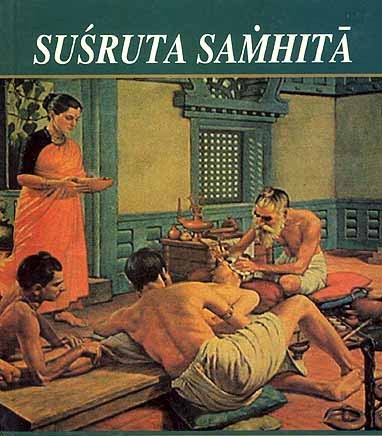18-year-old Komal Dhale was born with an absent nasal bone. Despite having undergone two forehead flap surgeries to reconstruct her nose in Ahmednagar, they were not successful and left her with scars on her forehead. This left her socially awkward, and she started avoiding going out in public.
Desperately wanting to help her and not wanting to give up hope, her family approached Dr Nitin Mokal, a senior plastic surgeon at the state-run GokuldasTejpal (GT) Hospital. In an attempt to help Komal, Dr Nitin turned back time to almost 500 years ago.
Sushruta, also known as the ‘father of surgery’ has detailed various techniques and procedures in his compendium called Sushruta Samhita. In this, he also focused on nasal reconstruction.

Photo Source: Wikimedia Commons
His method involved cutting a flap of skin from the cheek to cover the mutilated area. He then inserted two reeds or tubes, to ensure the nostrils didn’t heal closed, rubbed the new nose with an abrasive powder, and dressed it in a clean cloth, which irritated it and caused it to start healing.
Gaspare Tagliacozzi, one of the first ever-plastic surgeons in the Western world, improved on this method with what is now referred to as the Italian Method.
Gaspare’s process involved carefully slicing a flap of skin from the patient’s bicep area, without completely removing it so that the cells would not decay.
This flap would then be held and attached to the patient’s nose area, where it was grafted onto the face.
Photo Source: Wikimedia Commons
The patient would then have to remain in this position for several weeks until the skin from the arm fully attached to the face. The skin was then detached and reshaped to resemble a nose.
While this procedure was extremely uncomfortable and impractical – immobilising the patient for a significant period – it worked!
Komal was admitted to the hospital on August 29. The procedure carried out by Dr Nitin is done in four stages and takes three months. On August 31, the first stage of surgery started by preparing the pedicle tube from her left arm. This process itself takes around a month.
In the second stage of the procedure, a part of her rib bone was grafted on her nose, and the arm flap was attached to the nose tissue. Once this was done, the pedicle was severed, and Dr Nitin was finally able to bring her arm down. The next step involves shaping the skin on the nose to resemble a nose.
Dr Vinay Jacob, a senior plastic surgeon at Bombay Hospital who is also attached to GT hospital, told Mirror, “So far in my career, I have never seen someone use the Italian method of rhinoplasty. I remember reading this method in textbooks of plastic surgery but seeing it in practice is fascinating. It’s like reviving history,” as reported in Mumbai Mirror.
Here’s hoping that medicine continues to benefit and draw inspiration from the wealth of information that the past holds.
Like this story? Or have something to share?
Write to us: contact@thebetterindia.com
Connect with us on Facebook and Twitter.
NEW: Click here to get positive news on WhatsApp!
If you found our stories insightful, informative, or even just enjoyable, we invite you to consider making a voluntary payment to support the work we do at The Better India. Your contribution helps us continue producing quality content that educates, inspires, and drives positive change.
Choose one of the payment options below for your contribution-
By paying for the stories you value, you directly contribute to sustaining our efforts focused on making a difference in the world. Together, let's ensure that impactful stories continue to be told and shared, enriching lives and communities alike.
Thank you for your support. Here are some frequently asked questions you might find helpful to know why you are contributing?

